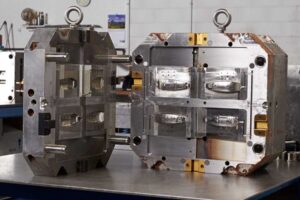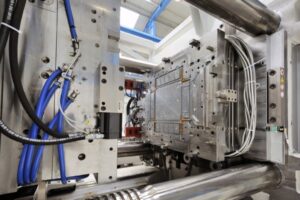In the fierce competition in the manufacturing industry, injection moulds as the core assets of the production chain, its management efficiency directly affects product quality, delivery cycle and corporate profits. עם זאת, the traditional mould management has long been facing the ‘chaos’ predicament: manual records are prone to error, mould status is difficult to track, maintenance plans lag behind, inefficient deployment of resources …… These problems are like the ‘reefs ’, hindering the enterprise to lean production. המבוא של RFID (זיהוי בתדר רדיו) טכנולוגיה, the industry is bringing a silent but profound change.
The traditional mould management pain points: efficiency and precision of the double dilemma
- The use of injection moulds is complex: frequent replacement, high temperature and high pressure environment, multi-link flow. Traditional management mode relies on manual ledger or barcode scanning, there are significant drawbacks:
- Data lag: Mould status (e.g., number of times used, רשומות תחזוקה) needs to be entered manually, with delayed information updating, which can easily lead to overloaded use or maintenance omission.
- Low recognition efficiency: barcodes are easily worn, need to be aligned for scanning, and the recognition rate plummets in oily or metallic environments.
- Waste of resources: Unknown location of moulds leads to duplicate purchasing, or delayed production schedule due to emergency mould transfer.
An auto parts manufacturer has statistics, due to confusion in the management of moulds caused by the loss of downtime accounted for 8% of the annual cost, the problem needs to be solved.
טכנולוגיית RFID: moulds to give ‘digital identity’
 RFID through radio waves to achieve non-contact data reading, its core advantages perfectly match the mould management needs:
RFID through radio waves to achieve non-contact data reading, its core advantages perfectly match the mould management needs:
- Resistant to harsh environments: The tag is encapsulated to resist high temperature and corrosion, and is suitable for the oil and metal environment of the injection moulding workshop.
- Batch identification: Multiple tags can be read at the same time without alignment, increasing the efficiency of storage and retrieval by more than 70%.
- Dynamic data update: The tag can store information such as mould specifications, רשומות תחזוקה, וכו '., with real-time feedback of temperature, pressure and other parameters from sensors.
לדוגמה, a home appliance company for each set of moulds installed anti-metal RFID tags, combined with the workshop fixed read-write, to achieve fully automated records of moulds in and out, and bid farewell to the manual ledger.
RFID in the mould life cycle application practice
Intelligent warehouse management
Deploy RFID channel door at the entrance of the mould warehouse, automatically identify the moulds in and out of the warehouse, and update the inventory status in real time. Combined with AGV, it can quickly locate the target moulds and reduce 50% of the time of finding moulds.
Production process monitoring
Installation of read-write on the injection moulding machine, automatically record the mould up time, moulding cycle, cumulative use times. When the preset threshold is reached, the system automatically triggers a maintenance work order to avoid excessive wear and tear.
Preventive Maintenance and Traceability
RFID tags store maintenance records, replacement parts and other data to form a mould ‘health file’. A medical device company used this to reduce mould failure rates by 40% and achieve accurate traceability of quality issues.
Data-driven decision optimisation
RFID data and ERP, MES system through, can analyse the mould utilisation rate, capacity bottlenecks, for procurement planning and production scheduling to provide a basis. לדוגמה, a daily chemical packaging company through the data found that 20% of the mould contributes to 60% of the production capacity, so as to optimize resource allocation.
From technology to value: RFID brings the management leap
The implementation of RFID technology injection moulding enterprises general feedback:
- Efficiency improvement: 65% shorter mould deployment time, manual inspection costs down 30%.
- Loss reduction: Extend mould life by 15%-20% through accurate maintenance.
- Upgraded decision-making: Data visualisation allows management to shift from ‘experience-driven’ to ‘digitally-driven’.
As a 3C product manufacturer said: ‘RFID not only manages the mould, but also makes the whole production process transparent and controllable.’





